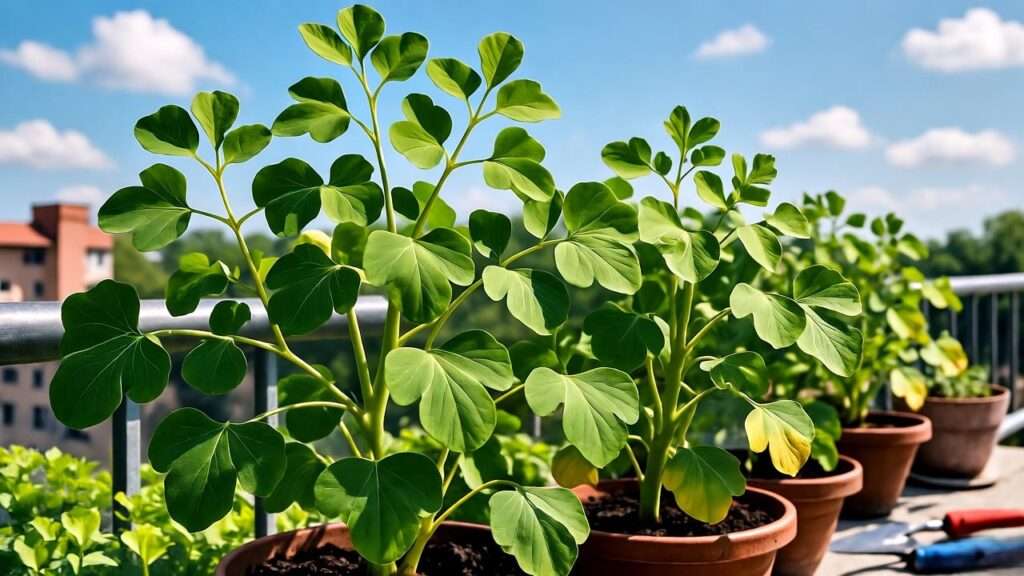Imagine plucking fresh, fragrant methi leaves from your own garden to spice up your curries or brew a soothing tea—sounds delightful, doesn’t it? 🌶️ Growing methi plants at home is not only rewarding but also surprisingly simple, even for beginners. Whether you’re passionate about methi plant growing or just starting your gardening journey, this comprehensive guide will equip you with expert tips to cultivate lush, healthy fenugreek in your backyard, balcony, or windowsill. 🌞 With its rich culinary uses, medicinal benefits, and fast-growing nature, methi (fenugreek) is a must-have herb for any home gardener.
In this article, written by a horticulture expert with over a decade of experience in herb cultivation, you’ll discover seven essential tips to ensure methi plant growing success. From selecting the best seeds to troubleshooting common issues, we’ve got you covered with practical, science-backed advice. Expect step-by-step instructions, pro insights, and answers to your burning questions—all designed to help you grow vibrant methi plants effortlessly. Let’s dive in and transform your garden into a fenugreek haven! 🌱
Why Grow Methi at Home? 🌱
Methi, or fenugreek, is more than just a flavorful herb—it’s a nutritional powerhouse and a gardener’s delight. Here’s why cultivating methi at home is a game-changer:
Nutritional and Culinary Benefits 🍲
Methi leaves and seeds are packed with nutrients like iron, fiber, and vitamins A and C. In Indian cuisine, fresh methi leaves add a distinctive, slightly bitter flavor to dishes like methi paratha, aloo methi, and curries. The seeds, often toasted or ground, enhance spice blends and teas. Beyond flavor, fenugreek is celebrated for its health benefits, including aiding digestion, regulating blood sugar, and even promoting hair growth. Growing your own methi ensures a fresh, organic supply for your kitchen and wellness routines. 🥗
Economic and Environmental Advantages 🌍
Purchasing fresh herbs can be pricey, and store-bought methi often lacks the vibrancy of homegrown leaves. By growing methi, you save money and reduce your carbon footprint by cutting down on packaged produce. Plus, home gardening supports sustainable living—your methi plants enrich the soil and attract pollinators like bees. 🌼
Gardening Joy and Ease 🌞
Methi is a beginner-friendly herb that grows quickly, often ready to harvest in just 3–6 weeks. Its compact size makes it perfect for small spaces, whether in pots on a balcony or a sunny corner indoors. The satisfaction of nurturing a plant from seed to harvest is unmatched, making methi an ideal choice for gardeners of all levels. 🌱
Understanding the Methi Plant 🌿
To grow methi successfully, it’s helpful to understand its botanical basics and growth habits.
Botanical Overview 📚
Methi, scientifically known as Trigonella foenum-graecum, is an annual herb in the legume family. Its trifoliate leaves and small, white flowers give way to pods containing aromatic seeds. Both the leaves and seeds are edible, with a slightly nutty, maple-like flavor that’s a staple in many cuisines. 🌾
Growth Cycle and Characteristics ⏳
Methi has a rapid growth cycle, with leaves ready for harvest in 3–4 weeks and seeds in 2–3 months. It thrives in warm, sunny conditions and well-drained soil, reaching heights of 1–2 feet. Its shallow root system makes it adaptable to containers, but it prefers consistent moisture and moderate temperatures. 🌞
Common Varieties for Home Growing 🌱
Popular methi varieties include Kasuri (known for its aromatic leaves) and Pusa Early Bunching (ideal for quick harvests). Choose a variety suited to your climate—Kasuri thrives in warmer regions, while Pusa performs well in cooler conditions. Check with local nurseries or seed suppliers for regionally adapted options. 🌿
Essential Tip 1: Choosing the Right Seeds and Soil 🌱
The foundation of successful methi plant growing lies in selecting quality seeds and preparing the perfect soil.
Selecting High-Quality Methi Seeds 🛒
Opt for organic, non-GMO methi seeds from reputable suppliers to ensure healthy germination. Seeds should be plump and free from damage. Pro tip: Soak seeds in lukewarm water for 12–24 hours before planting to soften the seed coat and boost germination rates by up to 20%. 🌱
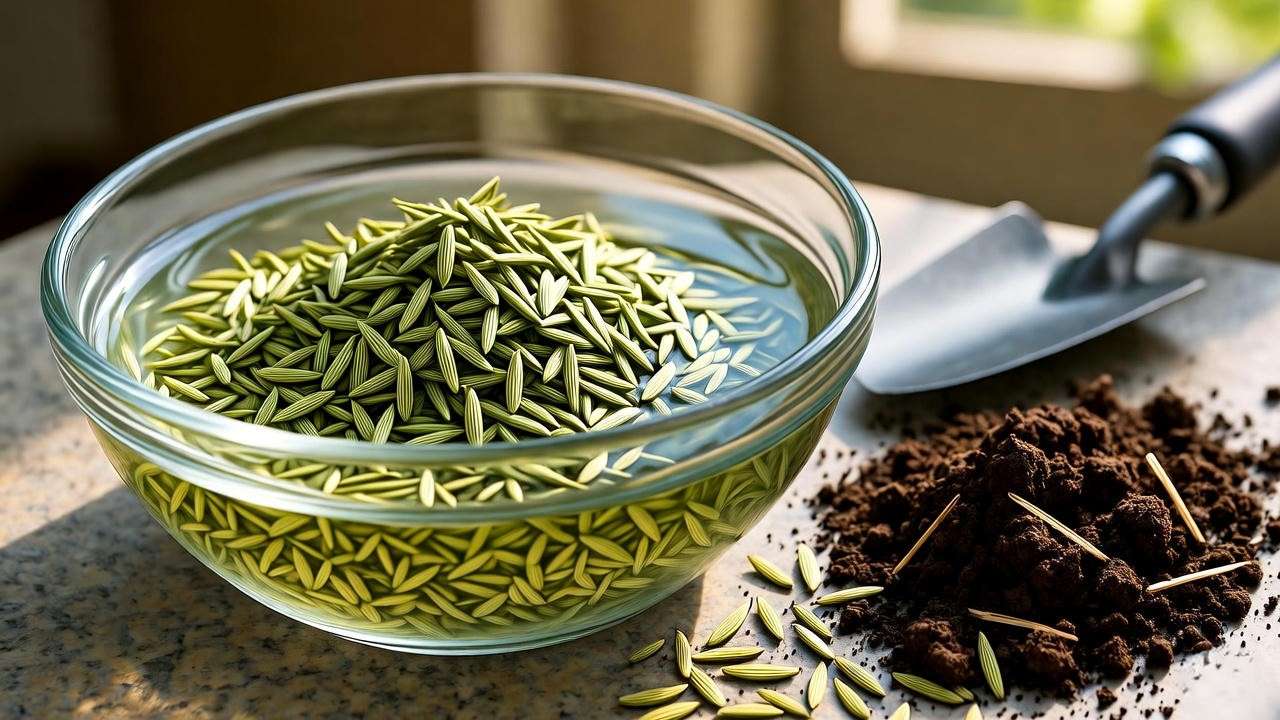
Preparing the Perfect Soil Mix 🪴
Methi thrives in well-draining, loamy soil with a pH of 6.0–7.0. Create a DIY soil mix by combining 50% garden soil, 30% compost, and 20% sand or perlite for optimal drainage. If using pots, ensure they have drainage holes to prevent waterlogging, which can stunt growth. 🌾
Container vs. Garden Bed 🏡
Methi grows well in both containers and garden beds. Containers (6–8 inches deep) are ideal for small spaces or indoor gardening, offering mobility and control over soil conditions. Garden beds suit larger harvests but require well-prepared soil to avoid compaction. Choose based on your space and gardening goals. 🪴
Essential Tip 2: Planting Methi the Right Way 🌱
Proper planting sets the stage for healthy methi growth. Here’s how to do it right.
Best Time to Plant 📅
Plant methi in spring or early fall when temperatures range between 50–85°F (10–30°C). In tropical climates, avoid peak summer heat to prevent bolting (premature flowering). For year-round indoor growing, maintain consistent warmth and light. 🌞
Step-by-Step Planting Guide 🛠️
- Soak Seeds: Soak methi seeds in water for 12–24 hours to enhance germination.
- Prepare Soil: Fill pots or garden beds with your soil mix, ensuring it’s loose and well-aerated.
- Sow Seeds: Plant seeds ¼ inch deep, spacing them 2–3 inches apart to avoid overcrowding.
- Water Gently: Use a spray bottle or watering can with a fine rose to moisten the soil without displacing seeds.
- Cover and Wait: Place pots in a sunny spot and keep soil moist. Expect sprouts in 3–7 days. 🌱
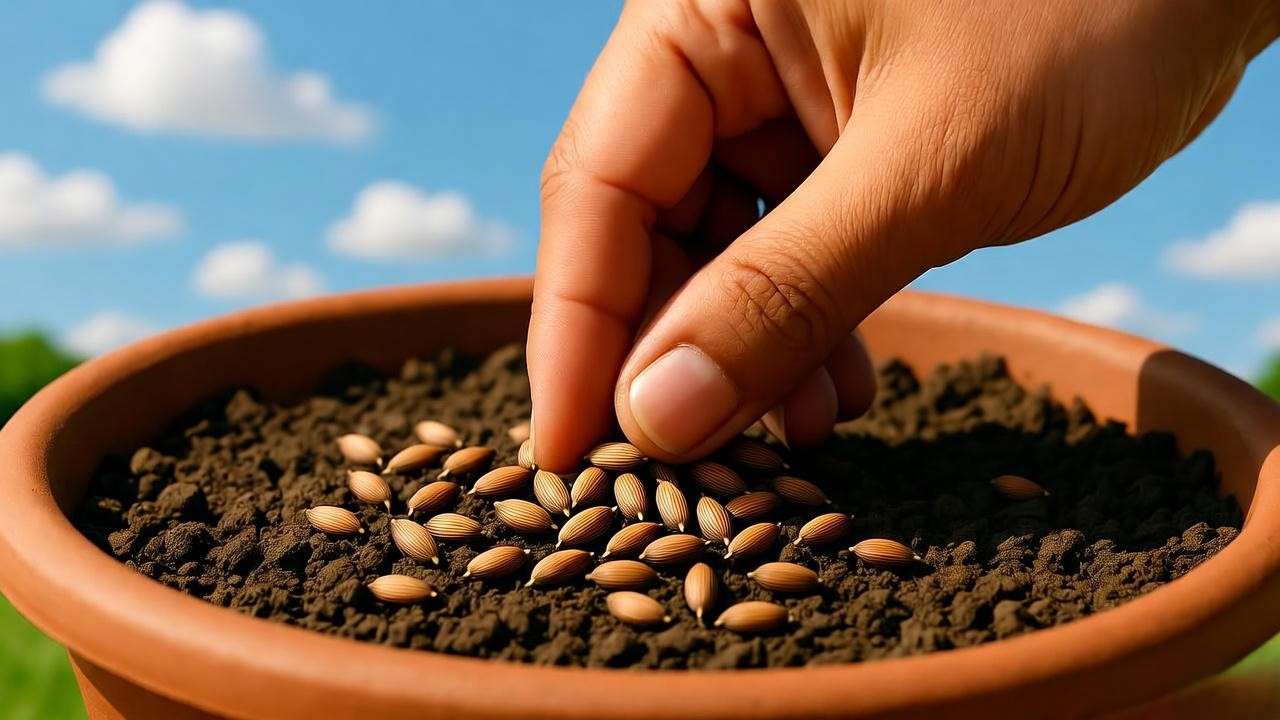
Indoor vs. Outdoor Planting 🏠🌞
For indoor growing, place pots on a sunny windowsill or under LED grow lights (12–14 hours daily). Outdoors, choose a spot with full sun and protection from strong winds. If frost is a concern, use row covers or bring pots indoors during cold snaps. 🌿
Essential Tip 3: Watering and Feeding Your Methi Plants 💧
Consistent care ensures your methi plants stay lush and productive.
Watering Best Practices 🚿
Methi prefers consistently moist soil but hates waterlogging. Water every 2–3 days, adjusting based on climate and soil drainage. In hot weather, check daily to prevent drying out. Use a watering can with a fine spout to avoid disturbing young seedlings. 💦
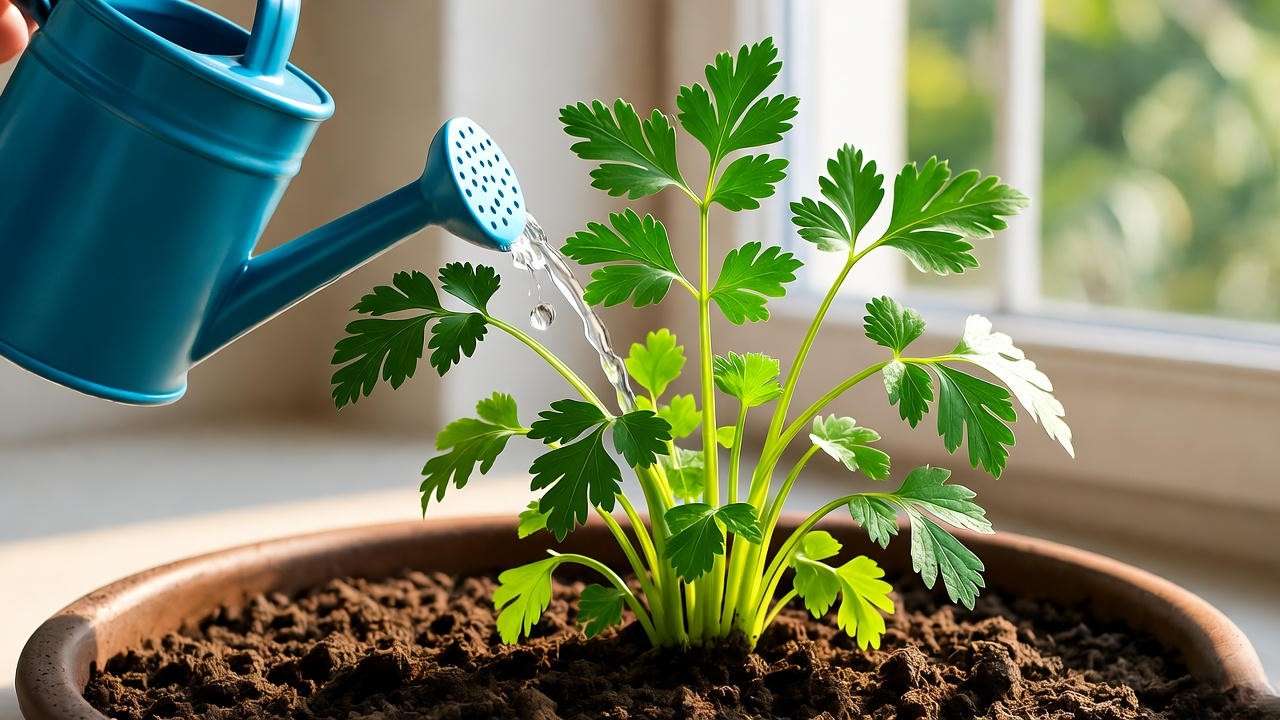
Fertilizing for Lush Growth 🌿
Feed methi plants every 2 weeks with organic compost or a balanced liquid fertilizer (e.g., 10-10-10). Dilute fertilizer to half-strength to avoid leaf burn. Over-fertilizing can lead to excessive foliage with reduced flavor, so stick to a light feeding schedule. 🌱
Common Watering Mistakes to Avoid ❌
- Overwatering: Leads to yellowing leaves or root rot. Check for soggy soil and improve drainage if needed.
- Underwatering: Causes wilting or stunted growth. Ensure soil stays moist but not saturated. 🌾
Essential Tip 4: Providing Optimal Light and Temperature ☀️
Light and temperature are critical for methi’s growth and flavor.
Sunlight Requirements 🌞
Methi needs 4–6 hours of direct sunlight daily. Indoors, supplement with LED grow lights if natural light is limited, aiming for 12–14 hours of exposure. Rotate pots regularly to ensure even light distribution. 🌱
Temperature Management 🌡️
Maintain temperatures between 60–75°F (15–24°C) for optimal growth. Protect plants from extreme heat (above 85°F) with shade cloth or from frost with row covers. Indoor growers can use a small fan to improve air circulation and prevent heat stress. 🌬️
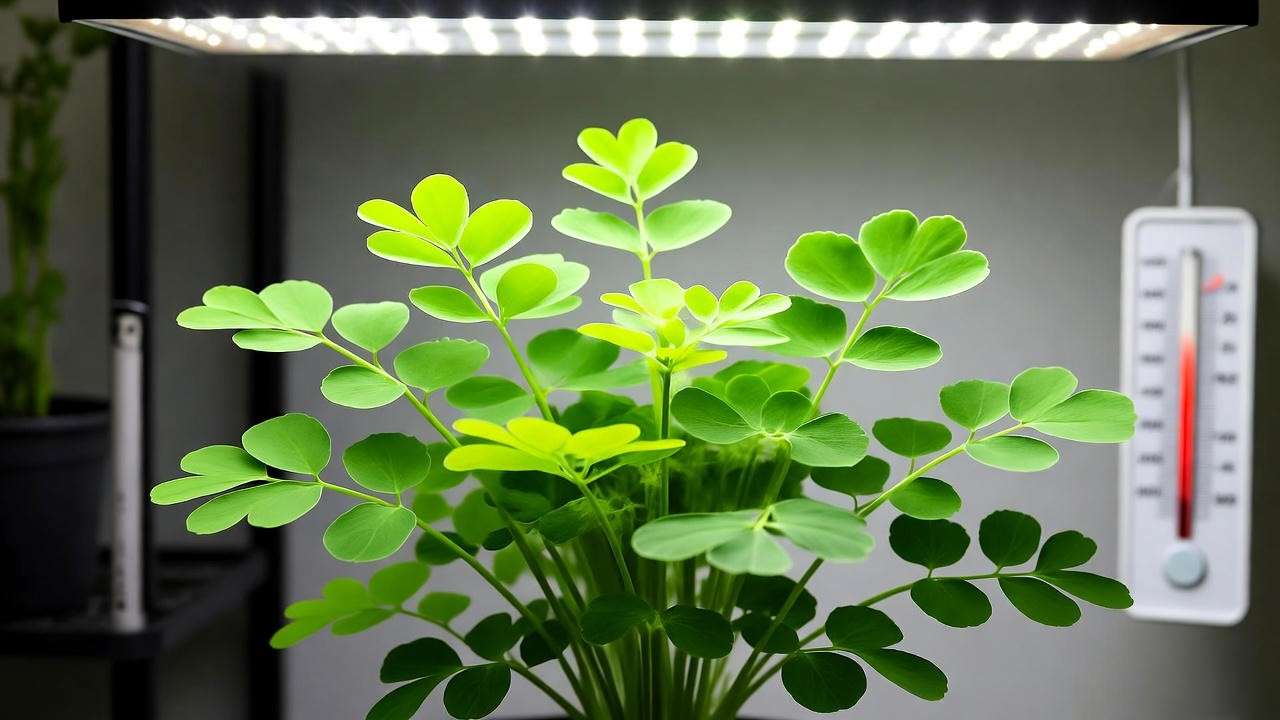
Seasonal Adjustments 🍂
In cooler climates, start methi indoors in late winter for a spring harvest. In tropical regions, grow during the cooler months to avoid bolting. Year-round indoor growing is possible with proper light and temperature control. 🌞
Essential Tip 5: Pruning and Harvesting Methi 🌿
Proper pruning and harvesting techniques keep your methi plants productive and healthy, ensuring a steady supply of fresh leaves and seeds.
When and How to Harvest ✂️
Methi leaves are ready to harvest 3–4 weeks after planting, when plants reach 4–6 inches tall. Use clean scissors to snip outer leaves, leaving the central growth point intact to encourage regrowth. Harvest in the morning when leaves are freshest and most flavorful. For continuous harvests, pick leaves every few days, taking no more than one-third of the plant at a time to avoid stress. 🌱
Pruning for Healthier Plants 🌾
Regular pruning promotes bushier, healthier methi plants. Pinch back the tips of young plants to encourage branching, and remove any yellowing or damaged leaves to prevent disease spread. If plants start to flower prematurely (bolting), pinch off flower buds to prolong leaf production. Use sharp, sanitized shears to avoid introducing pathogens. ✂️
Harvesting Seeds 🌰
To collect methi seeds, allow some plants to mature for 2–3 months until pods turn brown and dry. Cut the pods, place them in a paper bag, and let them dry completely in a warm, well-ventilated area. Gently crush the pods to release seeds, then store them in an airtight container in a cool, dry place for future planting or culinary use. 🌾
Essential Tip 6: Managing Pests and Diseases 🐞
Healthy methi plants are resilient, but pests and diseases can still pose challenges. Here’s how to keep them at bay.
Common Pests 🕷️
Methi is susceptible to pests like aphids, spider mites, and whiteflies, which can weaken plants and reduce yields. Inspect leaves regularly for tiny insects or sticky residue. Natural remedies:
- Spray plants with a mixture of neem oil and water (1 tsp per liter) every 7–10 days.
- Introduce companion plants like marigolds or basil to repel pests naturally.
- Use insecticidal soap for severe infestations, following label instructions. 🌼
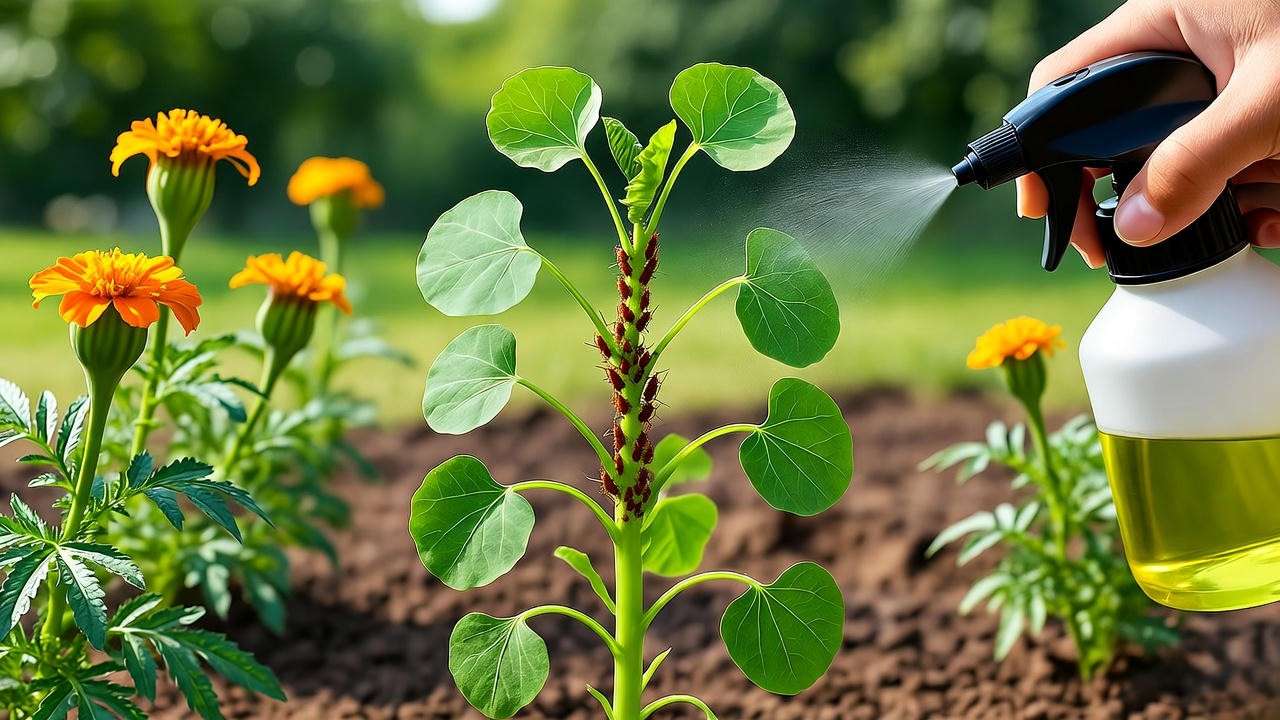
Preventing Diseases 🦠
Common methi diseases include powdery mildew (white patches on leaves) and root rot (caused by overwatering). To prevent these:
- Ensure proper drainage by using well-draining soil and pots with holes.
- Avoid overhead watering; use a watering can to target the soil directly.
- Maintain good air circulation by spacing plants 2–3 inches apart and pruning dense foliage. 🌬️
If powdery mildew appears, apply a baking soda solution (1 tbsp per gallon of water) as an eco-friendly treatment.
Expert Tip: Companion Planting 🌱
Pair methi with companion plants like coriander, dill, or marigolds to deter pests and enhance growth. Marigolds release compounds that repel aphids, while coriander attracts beneficial insects like ladybugs. Avoid planting methi near alliums (onions, garlic), as they may compete for nutrients. 🌼
Essential Tip 7: Troubleshooting Common Methi Growing Problems ❓
Even with the best care, methi plants can face challenges. Here’s how to diagnose and fix common issues.
Why Are My Methi Plants Not Growing? 😕
If your methi plants are stunted or fail to germinate:
- Poor germination: Ensure seeds are fresh and soaked before planting. Maintain soil temperatures above 50°F (10°C).
- Insufficient light: Move plants to a sunnier spot or supplement with grow lights.
- Nutrient deficiency: Apply a balanced fertilizer if leaves appear pale or growth is slow. 🌱
Dealing with Leggy or Sparse Plants 🌿
Leggy methi plants (tall, spindly growth) result from:
- Low light: Ensure 4–6 hours of direct sunlight or 12–14 hours under grow lights.
- Overcrowding: Thin seedlings to 2–3 inches apart to reduce competition.
- Lack of pruning: Pinch back tips to encourage bushier growth. 🌾
Yellowing Leaves or Stunted Growth 🥀
Yellow leaves or stunted plants may indicate:
- Overwatering: Check for soggy soil and reduce watering frequency. Improve drainage if needed.
- Pest damage: Inspect for aphids or spider mites and treat promptly.
- Nutrient issues: Test soil pH and add compost or fertilizer if nutrients are low. 🌱
Creative Uses for Your Homegrown Methi 🍴
Your methi harvest is a treasure trove for culinary, medicinal, and even beauty applications.
Culinary Inspirations 🥗
Fresh methi leaves elevate dishes with their unique flavor. Try these ideas:
- Methi Paratha: Knead chopped methi leaves into whole-wheat dough for flavorful flatbreads.
- Fenugreek Tea: Steep dried leaves or seeds in hot water for a soothing, digestion-friendly tea.
- Methi Chicken Curry: Add fresh methi leaves to curries for a rich, aromatic twist.
To store, wrap fresh leaves in a damp paper towel and refrigerate for up to a week, or dry them in a low oven (120°F) for long-term use. 🍲
Medicinal and Beauty Uses 💆♀️
Methi’s health benefits extend beyond the kitchen:
- Hair Growth: Create a DIY methi hair mask by soaking 2 tbsp of seeds overnight, grinding them into a paste, and applying to the scalp for 30 minutes before rinsing. This strengthens hair and reduces dandruff.
- Skin Health: Mix ground methi seeds with yogurt for a soothing face mask to reduce acne and inflammation.
- Digestion: Chew a few soaked seeds daily to support gut health. 🌿
Sharing Your Harvest 🎁
Share your methi bounty with friends and family! Bundle fresh leaves in eco-friendly packaging or gift dried seeds in decorative jars with recipe cards. Hosting a gardening workshop to teach others about methi plant growing is a fun way to spread the love. 🌱
Expert Insights and Pro Tips 🌟
To elevate your methi-growing game, here are insights from seasoned horticulturists.
Advice from Horticulturists 👩🌾
“Methi thrives on neglect—less fussing, more growing! Focus on good soil and consistent moisture, and your plants will reward you with abundant harvests.” – Dr. Priya Sharma, Horticulture Specialist with 15 years of experience in herb cultivation. 🌿
Pro tip: Rotate your methi crop with other herbs like coriander to maintain soil fertility and prevent pest buildup.

Sustainable Gardening Practices 🌍
Adopt eco-friendly habits to make your methi garden sustainable:
- Collect rainwater for irrigation to conserve resources.
- Use homemade compost from kitchen scraps to enrich soil.
- Reuse pots or repurpose household containers to reduce waste. 🌱
Scaling Up Your Methi Garden 🌾
Once you’ve mastered growing a few pots, expand to a full herb garden. Dedicate a small garden bed to methi, interplanting with companions like basil or cilantro. Use succession planting (sowing seeds every 2 weeks) for a continuous harvest year-round. 🌼
Frequently Asked Questions (FAQs) ❓
How long does it take for methi to grow? ⏰
Methi leaves are harvestable in 3–6 weeks, depending on conditions. Seeds take 2–3 months to mature. Regular harvesting encourages faster leaf regrowth. 🌱
Can I grow methi indoors year-round? 🏠
Yes! With 4–6 hours of sunlight or 12–14 hours under grow lights, methi thrives indoors. Maintain temperatures of 60–75°F and use well-draining pots. 🌞
What’s the best way to store methi seeds? 🌾
Dry seeds thoroughly and store them in an airtight container in a cool, dark place. Properly stored seeds remain viable for up to 2 years. 🌰
Why are my methi leaves bitter? 😖
Bitterness often results from over-mature leaves or heat stress. Harvest young leaves (4–6 inches) and ensure plants aren’t exposed to temperatures above 85°F. Water consistently to reduce stress. 🌿
Conclusion 🌿
Growing methi at home is a delightful, rewarding experience that brings fresh flavors and health benefits to your doorstep. By following these seven essential tips—choosing quality seeds, preparing the right soil, planting correctly, watering wisely, providing optimal light, pruning effectively, and managing pests—you’ll cultivate lush, vibrant methi plants with ease. 🌱 Whether you’re sprinkling fresh leaves into a curry or brewing a medicinal tea, your homegrown methi will elevate your culinary and wellness game.
Ready to start your methi garden? Grab some seeds, prepare your pots, and dive into the joy of growing! Share your progress with us in the comments or on social media using #MethiMagic. 🌟 For more herb-growing tips, check out our related articles on coriander care and organic pest control. Happy gardening! 🌼

